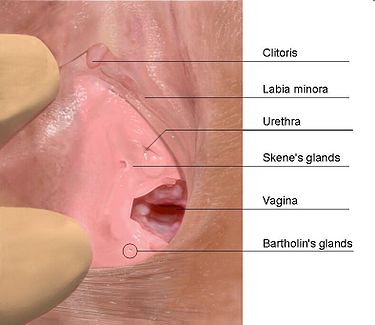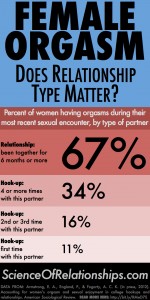Shadow work is useful for improving intimacy with a relationship
Shadow work can be good for improving intimacy with a relationship partner, but it’s important to approach it with intention and care. Shadow work helps you understand your repressed thoughts, feelings, and behaviors, many of which may be influencing your relationships unconsciously. This awareness can lead to greater self-acceptance and compassion, both for yourself and your partner.
When you’re more aware of your shadow, you’re better able to communicate your needs and wants to your partner. This can lead to more honest and open communication, which is essential for building intimacy and stronger emotional connection. Indeed, shadow work can help you heal past wounds and traumas that may be holding you back from fully connecting with your partner. By integrating your shadow, you become more vulnerable and open to intimacy.
As you explore your own shadow, you’ll naturally become more curious about your partner’s shadow as well. This can lead to a deeper understanding and appreciation for their experiences and motivations. Shadow work can be emotionally challenging, as it involves confronting aspects of yourself you may not like. This can lead to discomfort and resistance.
It’s important to remember that your shadow is your own, and not to project it onto your partner. Be mindful of this to avoid unhealthy blame or conflict. Discussing shadow work with your partner requires honesty and sensitivity. Be mindful of your partner’s feelings and communicate in a way that is constructive and supportive.
Overall, shadow work can be a powerful tool for improving intimacy in your relationship, but it’s important to approach it with awareness and care. Consider seeking guidance from a therapist or counselor if you’re interested in exploring shadow work more deeply.
Here are some additional resources that you may find helpful:
“36 Shadow Work Prompts for Relationships & Self Love”
“On the True Nature of Intimacy, Shadow Work, and Love”
What is shadow work? Video by Marianne Hill
What other ways of improving intimacy are there?
There are many wonderful ways to improve intimacy in your relationship beyond shadow work. Here are a few ideas:
- Deepen your communication. Pay attention to your partner without interrupting, and try to understand their perspective. Share your feelings openly and honestly. Let your partner know what’s going on for you emotionally, even if it’s difficult. Ask for what you need. Don’t expect your partner to read your mind. If you need more affection, support, or quality time, ask for it directly. Use “I” statements. This helps avoid blame and keeps the focus on your own feelings and needs. For example, instead of saying “You never make time for me,” try saying “I feel lonely when we don’t spend time together.”
- Spend quality time together. Make time for regular date nights, even if it’s just for an hour a week, and make time to connect with your partner one-on-one every day. Find activities you enjoy doing together, whether it’s cooking, hiking, playing games, or simply cuddling on the couch, find things you both enjoy doing.
- Be present in the moment. When you’re with your partner, put away your phone and other distractions and focus on them.
- Appreciate each other. Step outside your comfort zone and try new experiences together. This can help you bond and create new memories. Show appreciation and affection by telling your partner how much you love and appreciate them. Don’t take your relationship for granted. Let your partner know how much they mean to you.
- Give and receive physical touch. Holding hands, cuddling, and kissing are all great ways to show affection and build intimacy.
- Also, do little things for each other. Acts of service, like making coffee, doing the dishes, or running errands, can show your partner that you care.
- Celebrate each other’s successes. Be there for each other’s ups and downs. Celebrate each other’s successes and offer support during difficult times.
- Maintain your individuality. It’s important to maintain your own sense of self in a relationship. Make time for your hobbies and interests, spend time with friends and family, and pursue your own goals.
- Respect your partner’s boundaries. Everyone needs their own space sometimes. Respect your partner’s need for alone time and don’t be afraid to ask for your own.
- Be flexible and willing to compromise. No two people are exactly alike. Be willing to compromise and find solutions that work for both of you. Remember, building intimacy is a journey, not a destination. There will be ups and downs along the way, but by investing time and effort into your relationship, you can create a deep and lasting connection with your partner.
Knowing about the human archetypes of king warrior magician and lover can be helpful in understading relationships.
The idea that understanding the human archetypes of king, warrior, magician, and lover can be helpful in understanding relationships is a concept introduced by Jungian psychologists Robert Moore and Douglas Gillette in their book “King, Warrior, Magician, Lover: Rediscovering the Archetypes of the Mature Masculine.”
It’s crucial to understand that applying this framework does not define individuals or dictate rigid roles in relationships. Instead, it offers a lens through which you can explore the following points.
1. Internal aspects within yourself and your partner
King: Represents leadership, vision, responsibility, and order. Understanding this archetype can help you navigate decision-making, setting boundaries, and creating a sense of stability in your relationship.
Warrior: Embodies courage, action, assertiveness, and protection. Exploring this archetype can shed light on how you handle conflict, defend your values, and pursue goals in your relationship.
Magician: Represents transformation, creativity, intuition, and wisdom. Examining this archetype can help you understand personal growth, problem-solving, and fostering emotional connection within the relationship.
Lover: Encompasses passion, connection, sensuality, and vulnerability. This archetype sheds light on intimacy, emotional expression, and building secure attachment in your relationship.
2. Dynamics between partners
Analyzing how each partner expresses these archetypes, both mature and immature forms, can provide insights into your strengths and weaknesses as a couple. It can help you identify potential areas of conflict or imbalance, where one archetype is overemphasized or underplayed in the relationship. This framework can also promote empathy and understanding by encouraging you to see your partner’s actions through the lens of their dominant archetypes. However, it’s important to remember that this system is not universal and shouldn’t be used to label, stereotype, or control your partner. Everyone is a unique blend of various archetypes and expresses them differently. Focusing solely on archetypes can overshadow other important aspects of a relationship, like individual experiences, values, and cultural influences.
It’s essential to approach this framework with open-mindedness and sensitivity, avoiding rigid interpretations or expectations.
Ultimately, exploring these archetypes can be a valuable tool for self-reflection and understanding dynamics within your relationship. It can spark deeper conversations, foster empathy, and contribute to more meaningful connections. However, it’s important to use this framework cautiously and in conjunction with other approaches to understanding your partner and building a healthy relationship.
If you’re interested in further exploring this topic, I recommend reading “Warrior, Magician, Lover, King” or seeking guidance from a therapist or counselor trained in using archetypes in relationship work.




 Also, some women feel more comfortable reaching orgasm during vaginal intercourse than through masturbation. They may have an association in their minds between clitoral stimulation or masturbation and socially unacceptable or otherwise negative behavior.
Also, some women feel more comfortable reaching orgasm during vaginal intercourse than through masturbation. They may have an association in their minds between clitoral stimulation or masturbation and socially unacceptable or otherwise negative behavior. This clearly indicates that intercourse and orgasm have a different significance to women than they do to men.
This clearly indicates that intercourse and orgasm have a different significance to women than they do to men.  However, the implication that most women require clitoral stimulation to reach orgasm (which is really a simple factual observation) has caused controversy. Some sexologists believe that a man can only bring a woman to orgasmic pleasure through intercourse alone if her G spot has been awakened. This happens through a combination of sexual experience, sexual confidence, and emotional connection to her partner.
However, the implication that most women require clitoral stimulation to reach orgasm (which is really a simple factual observation) has caused controversy. Some sexologists believe that a man can only bring a woman to orgasmic pleasure through intercourse alone if her G spot has been awakened. This happens through a combination of sexual experience, sexual confidence, and emotional connection to her partner. And that is truly shocking! Considering that the basis of 99% of heterosexual relationships is love and sex, what can be done about it? Well, obviously, one of the things that can be done about it is for men to learn some great sexual techniques to increase a woman’s sexual pleasure.
And that is truly shocking! Considering that the basis of 99% of heterosexual relationships is love and sex, what can be done about it? Well, obviously, one of the things that can be done about it is for men to learn some great sexual techniques to increase a woman’s sexual pleasure.  If the man is lying on the bed, it might be necessary for him to arch his back a little bit so that his pelvis is raised. This gives you the opportunity to “grind” your clitoris against his pelvis. Hopefully that will make you come.
If the man is lying on the bed, it might be necessary for him to arch his back a little bit so that his pelvis is raised. This gives you the opportunity to “grind” your clitoris against his pelvis. Hopefully that will make you come.








